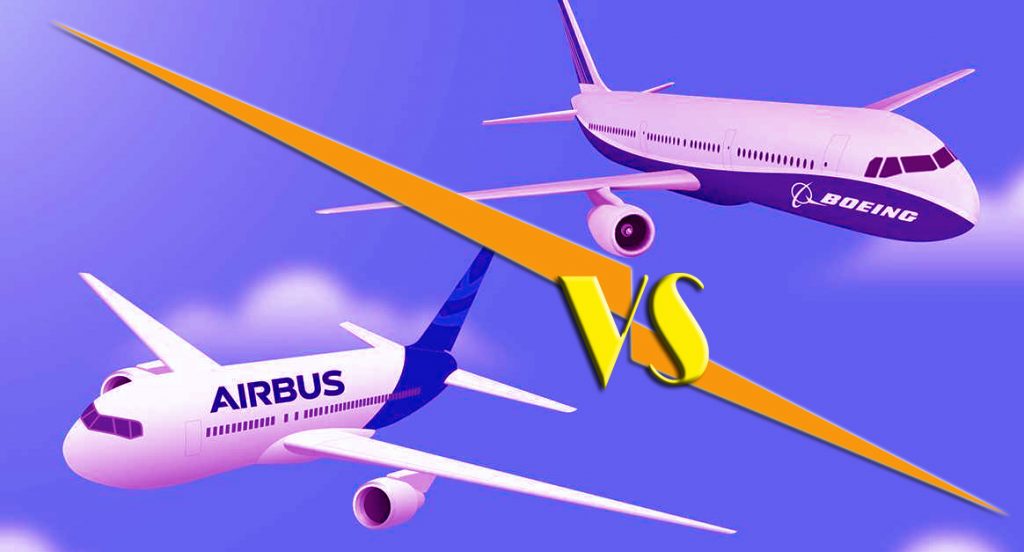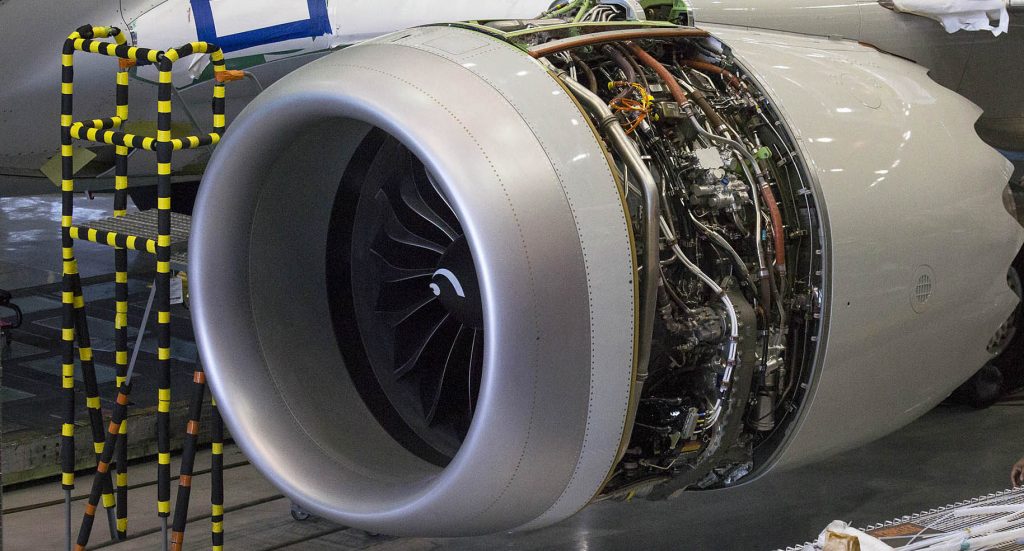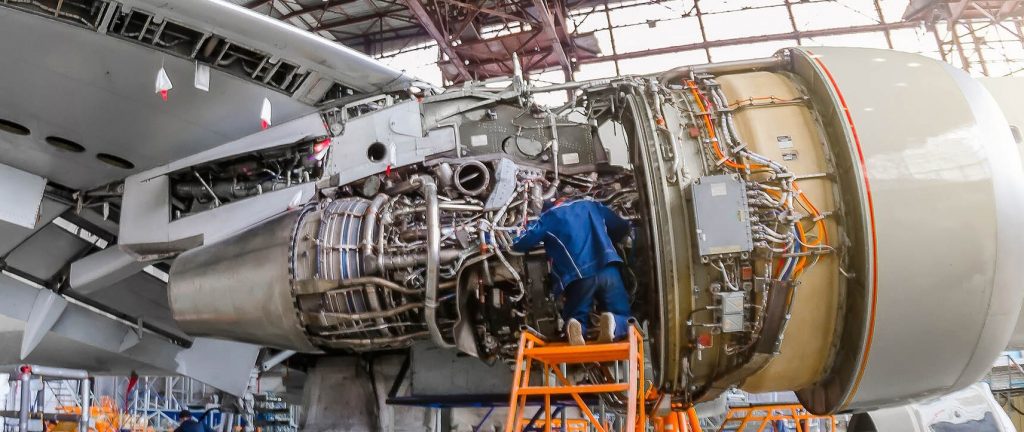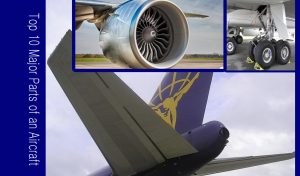Boeing and Airbus are two of the world’s largest and most well-known aircraft manufacturers, and they have been rivals in the commercial aircraft manufacturing industry for many years. Here is an overview while Exploring the Differences Between Boeing and Airbus by highlighting their histories, Manufacturers, Design Technology, Key Products, Market Position, etc.

Boeing:
History:
- Boeing, officially known as The Boeing Company, has a storied history that dates back to its founding in 1916 by William Boeing in Seattle, Washington, USA.
- The company’s early focus was on producing seaplanes, military aircraft, and mail planes. Boeing played a significant role in the development of air travel.
- Boeing’s breakthrough came in the 1950s with the introduction of the Boeing 707, the first commercially successful jet airliner. This jet revolutionized air travel by making it faster and more accessible.
Manufacturer:
- Boeing manufactures its aircraft primarily in the United States. Major production facilities are located in Everett, Washington, where wide-body aircraft like the 747, 767, 777, and 787 are assembled. There are also facilities in South Carolina and California.
- The company has a vast network of suppliers and partners worldwide, sourcing components and materials from various countries.
Design:
- Boeing’s design philosophy has often been characterized by a more conservative and traditional approach. Boeing aircraft typically feature a distinctive nose-up attitude when on the ground.
- Boeing values reliability and familiarity in its designs, which has endeared its aircraft to airlines and pilots around the world.
Technology:
Certainly, Boeing’s aircraft design is technically advanced and encompasses a range of engineering features and innovations that contribute to the safety, efficiency, and performance of their aircraft. While specific technical details may vary between different Boeing models, here are some key technical aspects of Boeing aircraft design:

- Aerodynamics and Wing Design:
- Boeing aircraft are meticulously designed to optimize aerodynamic efficiency. This includes carefully shaped wings that are designed to minimize drag and maximize lift.
- Winglets, which are upward-curving extensions at the tips of wings, are often incorporated to reduce vortex drag and enhance fuel efficiency.
- Boeing’s wings may also feature advanced high-lift devices like flaps and slats, which improve lift during takeoff and landing.
- Materials and Structural Design:
- Boeing utilizes advanced materials to achieve the ideal balance between strength, weight, and durability. Modern Boeing aircraft, like the Boeing 787 Dreamliner, extensively employ carbon-fiber-reinforced composites, which are lighter and more corrosion-resistant than traditional aluminum.
- The fuselage and wings are carefully designed and engineered to withstand the stresses of flight, including turbulence and the pressure changes experienced during ascent and descent.
- Fly-by-Wire Technology:
- Many Boeing aircraft incorporate fly-by-wire systems, which replace traditional mechanical control systems with electronic ones. This technology provides precise control, reduces weight, and enables advanced features such as envelope protection.
- Fly-by-wire systems involve sensors, computers, and actuators that transmit pilot inputs electronically to control surfaces, enhancing aircraft maneuverability and stability.
- Cockpit Avionics and Glass Cockpit:
- Boeing’s cockpits are equipped with advanced avionics, often featuring glass cockpit displays. These displays provide pilots with critical information, including flight data, navigation details, and system status.
- Boeing aircraft may include redundant avionics systems to ensure safety and reliability.
- Safety Systems and Redundancies:
- Boeing places a strong emphasis on safety, and its aircraft designs include multiple safety systems and redundancies.
- Critical systems, such as hydraulics, electrical power generation, and flight controls, often have redundant backups to ensure continued operation in the event of a failure.
- Engine Integration:
- Boeing collaborates closely with engine manufacturers to integrate engines seamlessly with the aircraft’s design. Engine nacelles and pylons are designed for optimal aerodynamics and performance.
- Modern Boeing aircraft are equipped with high-bypass turbofan engines that offer improved fuel efficiency and reduced noise emissions.
- Environmental Considerations:
- Boeing is committed to environmental sustainability. Their aircraft designs incorporate features such as quieter engines and improved fuel efficiency to reduce carbon emissions and noise pollution.
- Boeing explores alternative fuel options and sustainable materials to further enhance the environmental performance of their aircraft.
- Cabin Layout and Passenger Comfort:
- Boeing considers passenger comfort in its designs. Cabin layouts, seat designs, lighting, and noise reduction technologies are carefully engineered to enhance the passenger experience.
- Maintenance Accessibility:
- Boeing designs its aircraft with maintenance in mind, making components and systems easily accessible for maintenance and inspections. Advanced diagnostic systems can help identify and address maintenance issues efficiently.
Key Products:
- Boeing’s key products encompass a wide range of commercial, military, and space-related aircraft and systems. Some notable commercial aircraft include:
- Boeing 737: A best-selling narrow-body aircraft used for short to medium-haul flights. The 737 series has been a workhorse for many airlines.
- Boeing 777: A long-range wide-body aircraft known for its impressive range and passenger capacity.
- Boeing 787 Dreamliner: Renowned for its advanced technology, fuel efficiency, and passenger comfort, thanks to features like larger windows and improved cabin pressurization.
Market Position:
- Boeing has historically been a dominant player in the commercial aircraft market, with a strong presence in North America and a significant global reach.
- However, the company faced challenges with its Boeing 737 MAX program, which suffered two fatal crashes in 2018 and 2019, leading to a global grounding of the aircraft and significant financial and reputational damage.
- Boeing continues to face competition from Airbus, particularly in the narrow-body aircraft segment, where the Airbus A320neo family has been a strong contender.
In summary, Boeing has a rich history in aviation, a global manufacturing presence, a design philosophy emphasizing reliability, a history of technological innovation, a diverse portfolio of key products, and a historically strong market position in the commercial aircraft industry.
Airbus:
History:
- Airbus is a European aerospace corporation that officially came into existence in 1970. It is the result of a consortium of several European aerospace companies, including France’s Aérospatiale, Germany’s Deutsche Airbus, Spain’s CASA, and others.
- The formation of Airbus aimed to create a competitive European aerospace industry that could rival established giants like Boeing in the United States.
Manufacturer:
- Airbus manufactures its aircraft primarily in Europe. Major assembly lines are located in Toulouse, France, for wide-body aircraft like the A330, A350, and A380, and in Hamburg, Germany, for narrow-body aircraft like the A320 series.
- Airbus has additional production facilities and partnerships around the world, including the United States and China.
Design:
- Airbus is known for its innovative and modern aircraft designs. Airbus planes often have a more level and sleek appearance on the ground compared to some Boeing models.
- Airbus has a reputation for its use of advanced materials, aerodynamic efficiency, and innovative cabin layouts.
Technology:
Airbus aircraft are renowned for their advanced and technically sophisticated designs, which incorporate a range of engineering features and innovations aimed at optimizing safety, efficiency, and performance. While specific technical details can vary between different Airbus models, here are some key technical aspects of Airbus aircraft design:

- Aerodynamics and Wing Design:
- Airbus places a strong emphasis on aerodynamic efficiency. The wings of Airbus aircraft are carefully designed to minimize drag and maximize lift.
- Innovative wing designs may include features like advanced winglets, which reduce wingtip vortex drag, and wing fences, which manage airflow to improve overall efficiency.
- Materials and Structural Design:
- Airbus employs advanced materials in its aircraft to achieve the ideal balance between strength, weight, and durability. These materials may include carbon-fiber-reinforced composites, aluminum alloys, and titanium.
- The structural design is optimized for structural integrity, with computer-aided design (CAD) and finite element analysis (FEA) techniques ensuring robust and lightweight structures.
- Fly-by-Wire Technology:
- Airbus is a pioneer in fly-by-wire technology, which replaces traditional mechanical control systems with electronic systems. Fly-by-wire systems provide precise control and enable advanced features such as envelope protection, ensuring the aircraft does not enter unsafe flight conditions.
- These systems include sensors, computers, and actuators that electronically transmit pilot inputs to control surfaces.
- Cockpit Avionics and Glass Cockpit:
- Airbus cockpits are equipped with advanced avionics, often featuring large glass cockpit displays. These displays provide pilots with comprehensive flight information, navigation data, and system status.
- Airbus aircraft may incorporate redundancy in avionics systems to enhance safety and reliability.
- Safety Systems and Redundancies:
- Airbus designs its aircraft with multiple safety systems and redundancies to ensure robust operation.
- Critical systems, such as hydraulic systems, electrical power generation, and flight controls, often have redundant backups to maintain functionality in the event of a failure.
- Engine Integration:
- Airbus collaborates closely with engine manufacturers to integrate engines seamlessly with the aircraft’s design. This involves optimizing the engine nacelles and pylons for aerodynamics and performance.
- Modern Airbus aircraft are equipped with high-bypass turbofan engines for improved fuel efficiency and reduced noise emissions.
- Environmental Considerations:
- Airbus is committed to environmental sustainability, and its aircraft designs reflect this commitment. Features like quieter engines, improved fuel efficiency, and reduced carbon emissions are priorities.
- Airbus explores alternative fuels and sustainable materials to further enhance the environmental performance of its aircraft.
- Cabin Layout and Passenger Comfort:
- Airbus designs cabins to maximize passenger comfort. Factors like seating arrangements, cabin lighting, noise reduction, and air quality are carefully engineered.
- Long-haul Airbus models often offer premium features such as lie-flat seats in business class.
- Maintenance Accessibility:
- Airbus designs its aircraft with maintenance in mind, making components and systems accessible for routine maintenance and inspections. Advanced diagnostic systems assist in identifying and addressing maintenance issues efficiently.
Key Products:
- Airbus’s key products include a wide range of commercial aircraft, each designed for specific market segments:
- Airbus A320 Family: This includes the A318, A319, A320, and A321, which are among the most popular narrow-body aircraft for short to medium-haul flights.
- Airbus A330: A wide-body twin-aisle aircraft suitable for long-haul routes.
- Airbus A350 XWB: A highly efficient and long-range wide-body aircraft designed to compete with Boeing’s 787 Dreamliner.
- Airbus A380: A double-deck, ultra-large capacity aircraft, designed for high-density long-haul routes.
Market Position:
- Airbus has become a strong competitor in the commercial aircraft market and holds a significant share of the global market.
- The Airbus A320neo family, with its fuel-efficient engines, has been particularly successful and has garnered orders from airlines around the world.
- Airbus has a strong presence in Europe and has expanded its market reach globally, challenging Boeing’s dominance in certain market segments.
- Geopolitical factors often influence Airbus’s market position, with support from European governments, particularly France, Germany, and Spain.
In summary, Airbus has a relatively short but impactful history, with a focus on innovative design, advanced technology, a diverse range of key products, and a strong global market presence. Airbus has been a key player in challenging Boeing’s dominance in the commercial aircraft industry and continues to compete vigorously in various market segments.
Summaries Conclusion between Boeing vs Airbus
In conclusion, the rivalry between Boeing and Airbus, two of the world’s foremost aircraft manufacturers, is characterized by distinct historical origins, design philosophies, and global market positions. Boeing, with its American heritage dating back to 1916, is known for its conservative design approach, prioritizing reliability and familiarity, while Airbus, a European consortium established in 1970, is renowned for innovative, modern designs, including pioneering fly-by-wire technology. Boeing has historically dominated the North American market, while Airbus has expanded its global reach, challenging Boeing’s dominance in various segments. This competition has driven advancements in aircraft technology and design, offering airlines and passengers a diverse array of choices in the ever-evolving world of aviation.









